Bathroom Enhancements
Shower Fixtures

We understand the significance of having the ideal shower fixtures. They play a crucial role in enhancing your bathing experience, and we aim to assist you in discovering the most suitable options for your requirements.
In this article, we will explore the different types of showerheads, how to choose the right faucet, and the various shower handles available.
Whether you’re looking for a modern look or timeless designs, we have the knowledge and expertise to guide you towards the perfect shower fixtures for your bathroom.
Key Takeaways
- Water-saving showerheads, rainfall showerheads, handheld showerheads, high-pressure showerheads, and dual showerheads are different types of showerheads that offer various shower experiences.
- When choosing a faucet, consider different finishes such as chrome, brushed nickel, and oil-rubbed bronze. You can choose between wall-mounted, deck-mounted, or freestanding faucets based on your bathroom’s design and flexibility needs.
- Shower handles should be adjustable, versatile, easy to maintain, and match the style and finish of your bathroom decor.
- For a modern look, incorporate sleek and contemporary shower fixture finishes like brushed nickel or chrome. Make sure to properly clean and prepare the shower area before installation and consider hiring a professional plumber for flawless installation.
Types of Showerheads
In our discussion on shower fixtures, let’s explore the different types of showerheads.
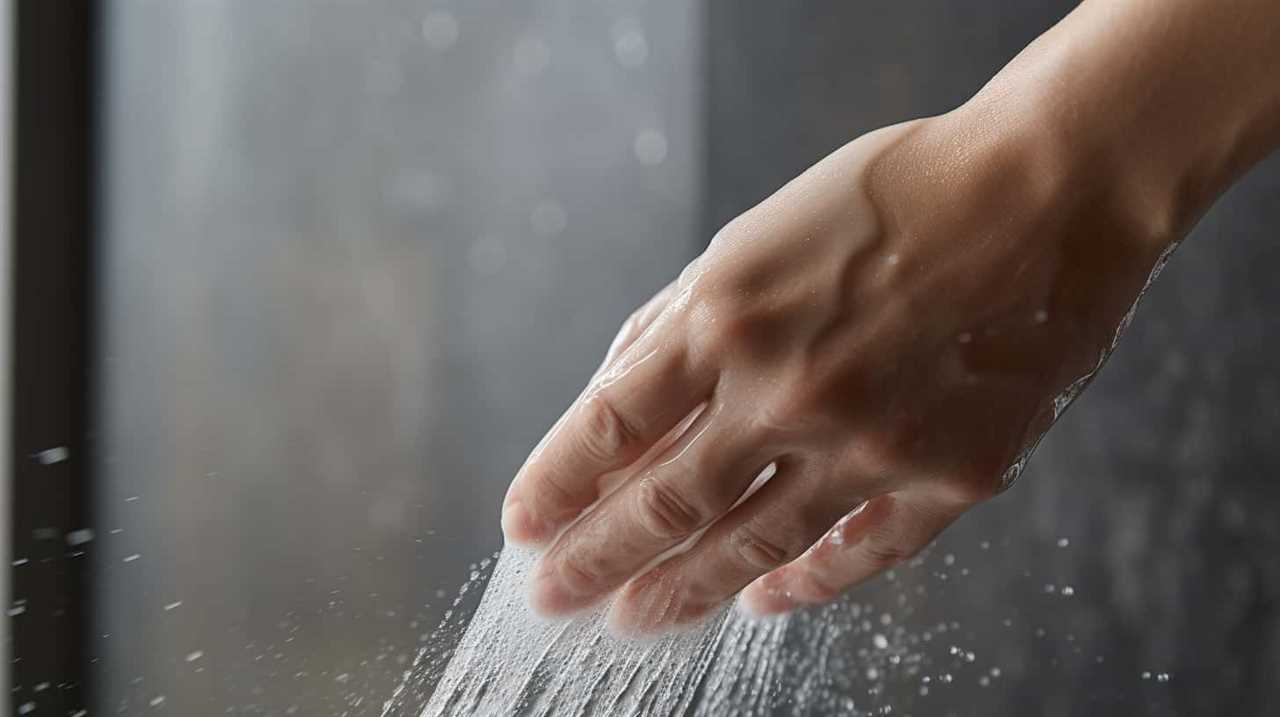
One popular type is the water-saving showerhead. These showerheads are designed to reduce water consumption without compromising on the quality of your shower experience. By incorporating features like aerators and flow restrictors, they can help conserve water while still providing a satisfying flow of water.
Another type of showerhead is the rainfall showerhead. These showerheads are designed to simulate the feeling of standing under a gentle rain shower. They typically have a large, wide face that disperses water in a soft and relaxing manner. Rainfall showerheads are a great choice for those who enjoy a luxurious and spa-like shower experience.
Whether you’re looking to save water or indulge in a soothing rainfall shower, there are plenty of options to choose from when it comes to showerheads.
Choosing the Right Faucet
Moving from the topic of types of showerheads, let’s now delve into the important task of selecting the right faucet for your shower. When it comes to choosing a faucet, there are a few key factors to consider: faucet finishes and faucet installation.
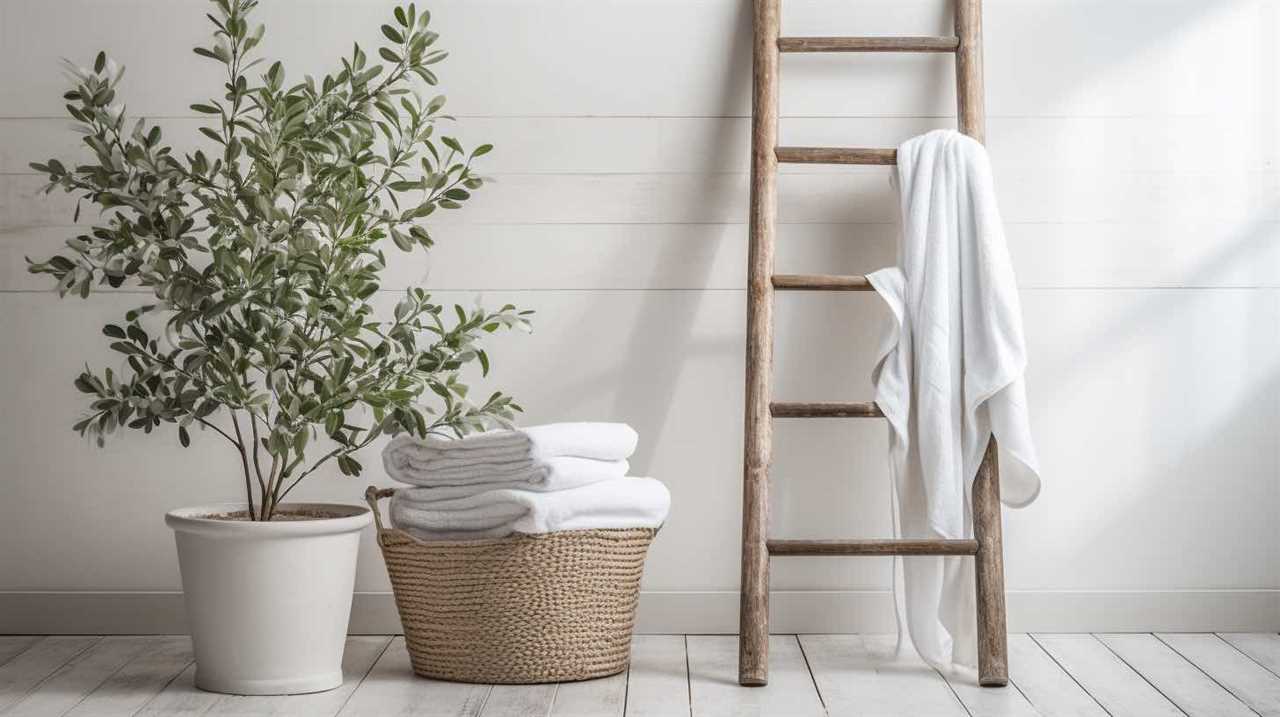
Faucet finishes play a crucial role in both the aesthetic appeal and durability of your shower fixture. Popular finishes include chrome, brushed nickel, and oil-rubbed bronze. Each finish has its own unique look and maintenance requirements, so it’s important to choose one that complements your bathroom decor and is easy to clean.
Next, you’ll need to consider faucet installation. There are three main types: wall-mounted, deck-mounted, and freestanding. Wall-mounted faucets are a popular choice for modern bathrooms, as they create a sleek and minimalist look. Deck-mounted faucets are installed on the deck of the bathtub or shower enclosure, while freestanding faucets are independent fixtures that can be placed anywhere in the bathroom.
Exploring Shower Handles
How can we choose the right shower handle for our bathroom?
When it comes to shower handle maintenance, it’s essential to select a handle that’s durable and easy to clean. Adjustable shower handles offer several benefits that make them a popular choice among homeowners.
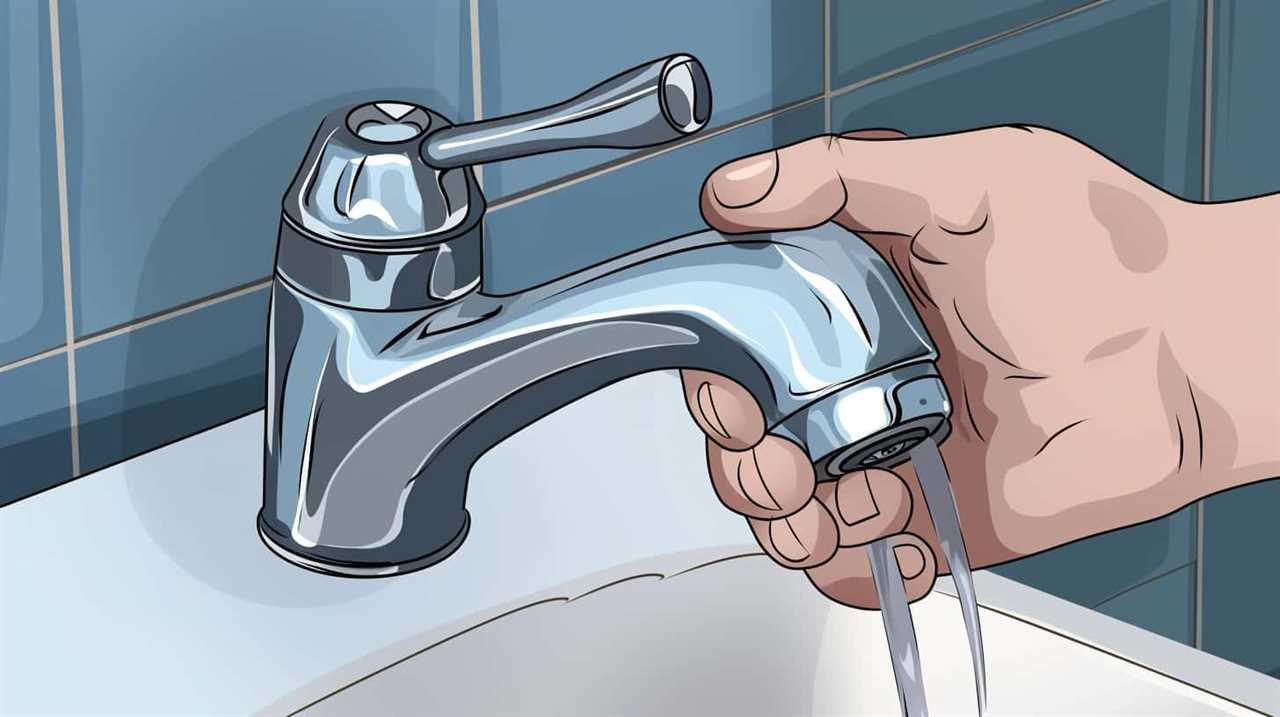
Here are three key points to consider when exploring shower handles:
- Ergonomic Design: Adjustable shower handles are designed to provide maximum comfort and ease of use. Their ergonomic shape fits well in the hand, allowing for a comfortable grip and effortless control of water flow and temperature.
- Versatility: Adjustable shower handles offer multiple settings, allowing users to customize their shower experience. Whether you prefer a gentle rain shower or a powerful massage, an adjustable handle can provide the perfect water pressure and spray pattern.
- Easy Maintenance: Adjustable shower handles are typically constructed from high-quality materials that are resistant to rust and corrosion. This makes them easy to clean and maintain, ensuring their longevity and optimal performance.
Choosing the right shower handle is crucial for a satisfying shower experience. By considering the benefits of adjustable shower handles and taking into account factors such as ergonomic design, versatility, and easy maintenance, you can make an informed decision that will enhance your bathroom.
Shower Fixtures for a Modern Look
When it comes to achieving a modern look in your bathroom, incorporating sleek and contemporary shower fixtures is key. The choice of shower fixture finishes can greatly impact the overall aesthetic of your bathroom. For a modern look, consider finishes such as brushed nickel, chrome, or matte black. These finishes aren’t only visually appealing but also resistant to water spots and corrosion, ensuring a long-lasting and low-maintenance solution.
When installing shower fixtures, it’s important to follow a few tips to ensure proper functionality and longevity. First, make sure to thoroughly clean and prepare the shower area before installation. Second, carefully read and follow the manufacturer’s instructions for installation to avoid any potential issues. Lastly, consider hiring a professional plumber for a flawless installation.
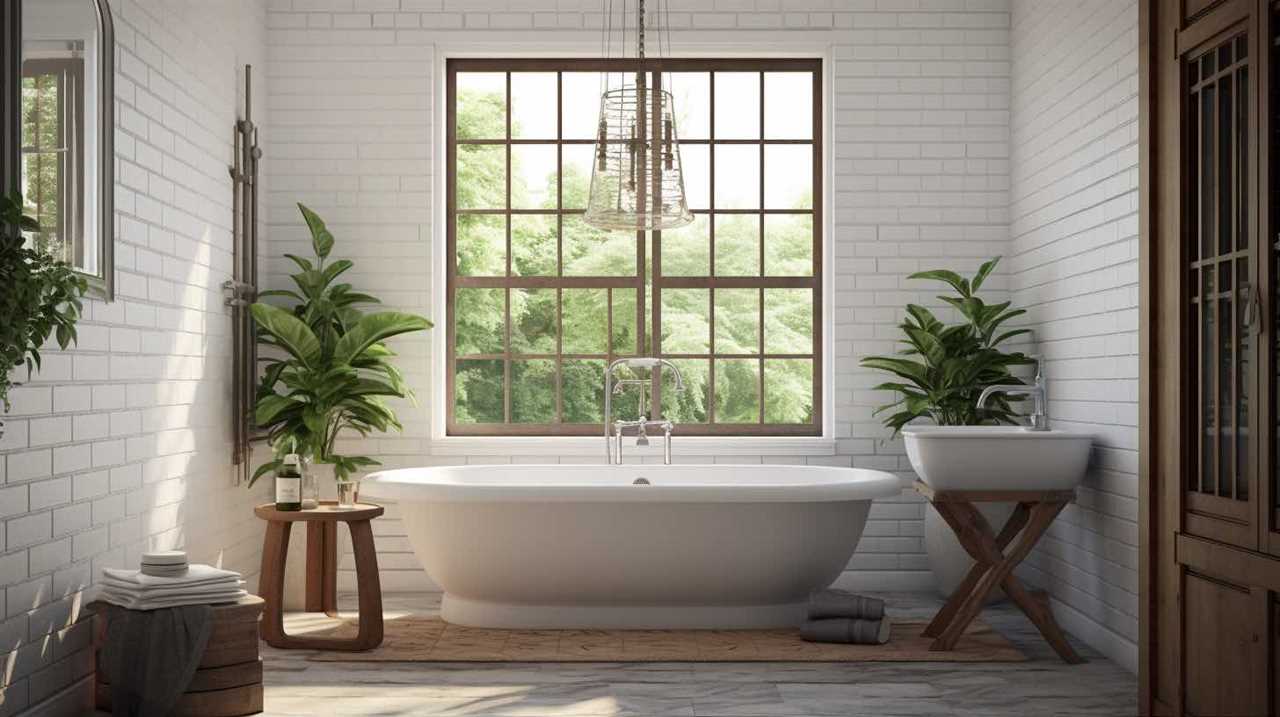
By incorporating the right shower fixture finishes and following proper installation tips, you can achieve a modern and stylish look for your bathroom.
In the next section, we’ll explore timeless shower fixture designs that never go out of style.
Timeless Shower Fixture Designs
To continue our exploration of shower fixtures, let’s now delve into the timeless designs that never go out of style. When it comes to classic shower fixtures, there are several options that exude elegance and sophistication.
Here are three sub-lists to help you imagine these vintage inspired shower fixtures:
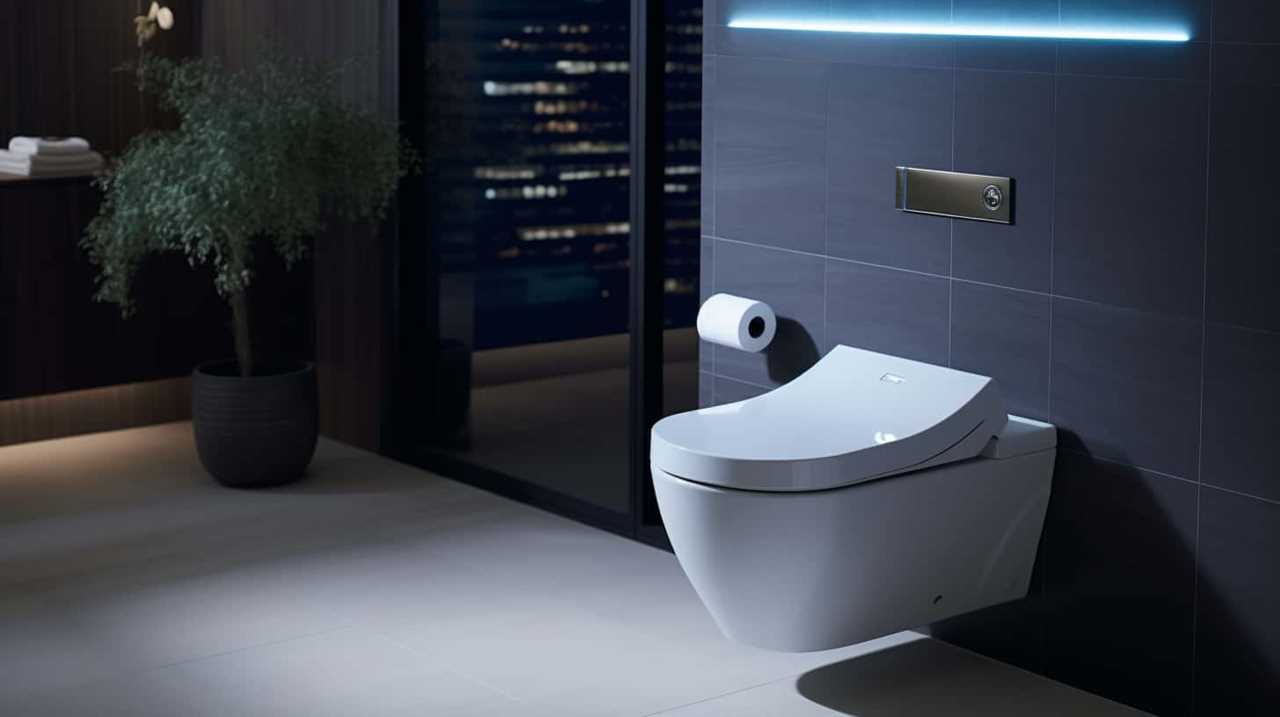
- Traditional Rainfall Showerheads:
- Wide diameter for a luxurious rainfall experience
- Timeless chrome finish for a sleek look
- Multiple spray settings for personalized comfort
- Clawfoot Tub Faucets:
- Antique-inspired design with intricate detailing
- Cross handles for a vintage touch
- Durable brass construction for long-lasting quality
- Wall-mounted Hand Showers:
- Vintage-inspired porcelain handle for a nostalgic feel
- Adjustable height and angle for optimal convenience
- Polished nickel finish for a timeless appeal
These classic shower fixtures will elevate the aesthetic of any bathroom while standing the test of time.
Frequently Asked Questions
How Do I Clean and Maintain Shower Fixtures to Ensure Longevity?
To ensure longevity, we clean and maintain shower fixtures by using effective cleaning techniques and preventing corrosion. Regularly cleaning with mild soap and water, avoiding abrasive cleaners, and using a rust inhibitor can help maintain their quality.
Are There Any Special Considerations for Installing Shower Fixtures in a Small Bathroom?
When dealing with a small bathroom and space limitations, it is important to consider the size and placement of shower fixtures. Proper planning and installation can maximize the available space and create a functional and visually appealing bathroom.
Can I Upgrade My Existing Shower Fixtures Without Replacing the Entire Shower System?
Yes, we can upgrade existing shower fixtures without replacing the entire system. There are various upgrading options available, including budget-friendly alternatives. These alternatives allow for a cost-effective way to improve your shower experience.
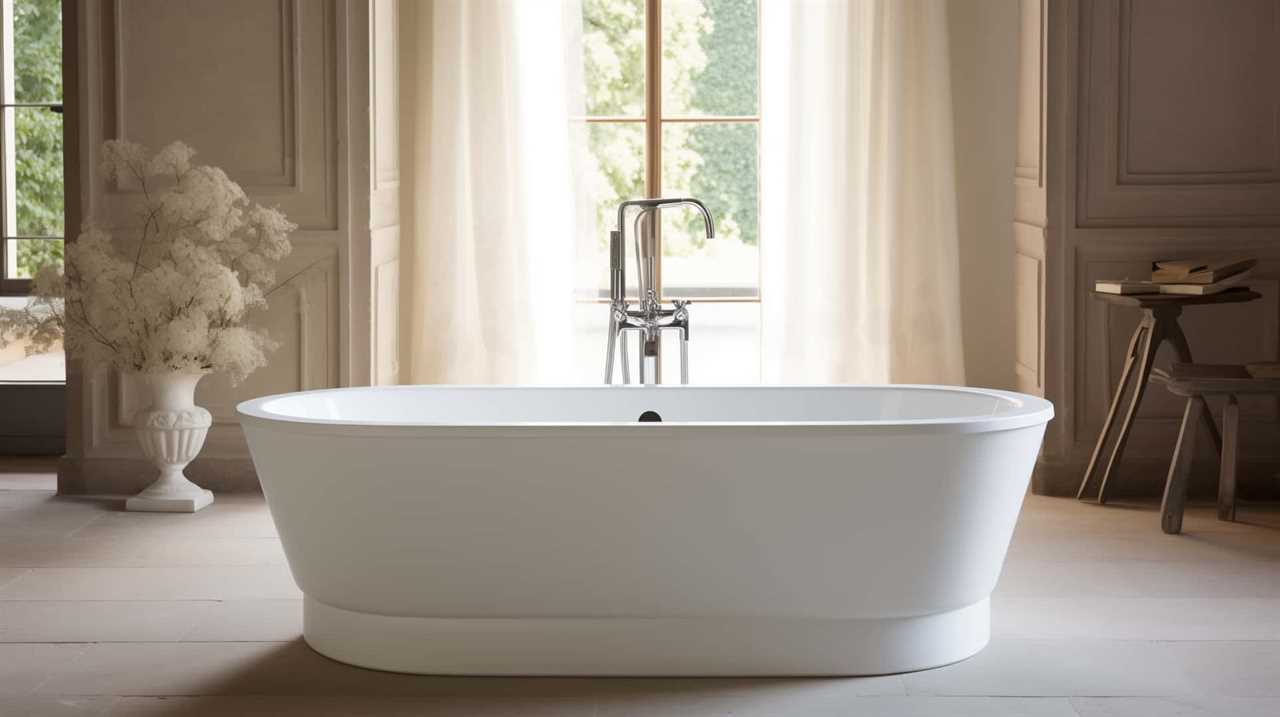
What Are Some Eco-Friendly Options for Shower Fixtures?
We have researched eco-friendly options for shower fixtures. These options include water-saving technology and the use of sustainable materials. These choices allow for a more environmentally conscious showering experience.
Are There Any Safety Features to Consider When Choosing Shower Fixtures?
When choosing shower fixtures, it’s important to consider safety features. From shower fixture finishes to preventing leaks, there are various factors to keep in mind. Let’s explore these safety considerations in detail.
Conclusion
In our journey through the world of shower fixtures, we’ve discovered the diverse types of showerheads and the importance of choosing the right faucet and shower handles.
We’ve also explored modern and timeless designs that can transform any bathroom.

Just as the shower fixtures enhance our bathing experience, we must remember that even the smallest details in life can make a significant impact.
So, let’s embrace the power of choice and design, both in our showers and in our lives.
With an impeccable eye for detail and a passion for bathroom-related, Ava leads our editorial team gracefully and precisely.
Under her guidance, Best Modern Toilet has flourished as the go-to resource for modern bathroom enthusiasts. In her free time, you might find Ava exploring antique shops and looking for vintage bathroom fixtures to add to her collection.
Bathroom Enhancements
What Should Not Be Poured Down the Toilet
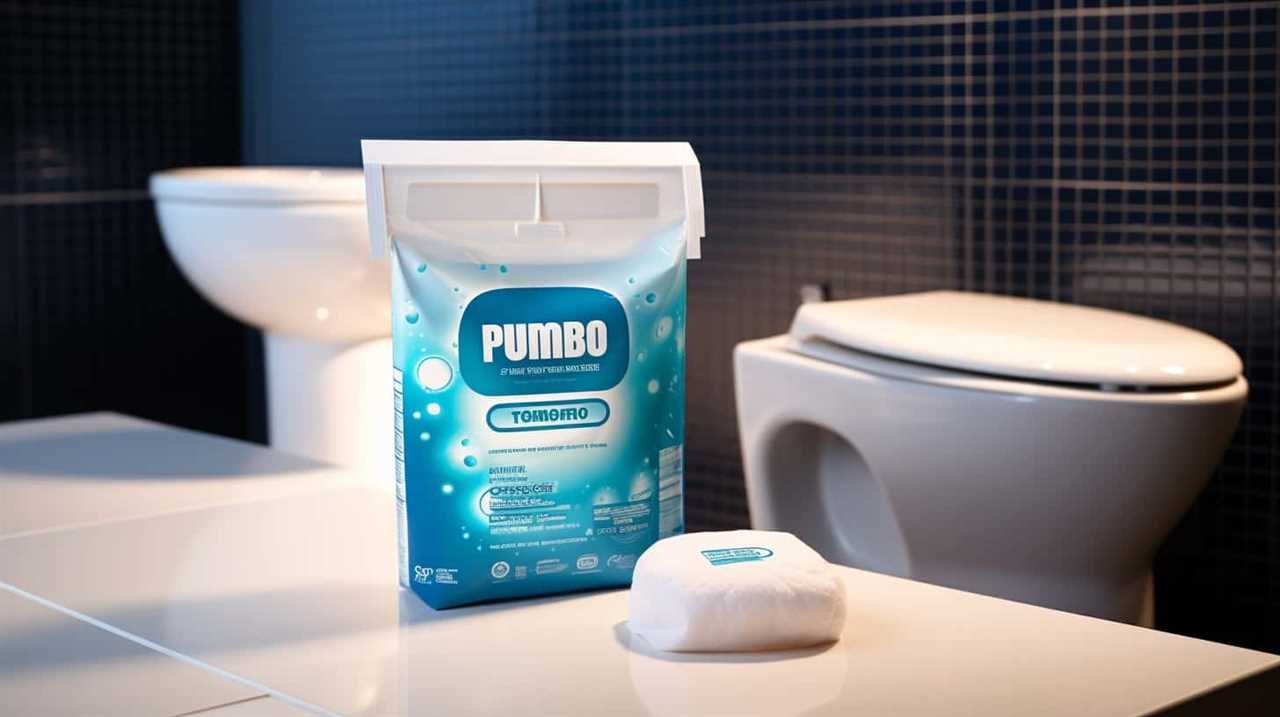
We believed we were well-informed about toilets, but we were mistaken! It appears there are certain items that should never be flushed down the toilet.
In our quest for mastery over toilet etiquette, we’ve discovered a few surprising culprits that can wreak havoc on our plumbing. So, if you want to avoid clogs and costly repairs, listen up!
We’re about to reveal the things you should never, ever flush down the toilet.
Key Takeaways
- Non-flushable personal hygiene products such as sanitary pads and baby wipes should not be flushed down the toilet to prevent plumbing damage and costly repairs.
- Grease, fats, and oils should never be poured down the toilet as they can solidify and clog pipes, leading to expensive repairs and harm to the environment.
- Medications and chemicals should not be flushed down the toilet to prevent water contamination and harm to aquatic life. They should be disposed of through drug take-back programs or designated collection centers.
- Paper towels and tissues should not be flushed down the toilet as they can cause clogs in the plumbing system and contribute to pollution. Proper disposal options include using waste bins or composting.
Non-Flushable Personal Hygiene Products
- We shouldn’t flush any non-flushable personal hygiene products down the toilet. This includes items like sanitary pads and baby wipes.
Flushing these products can cause serious damage to our plumbing systems and lead to costly repairs. While these items may seem small, they can accumulate and clog pipes, leading to blockages and backups.
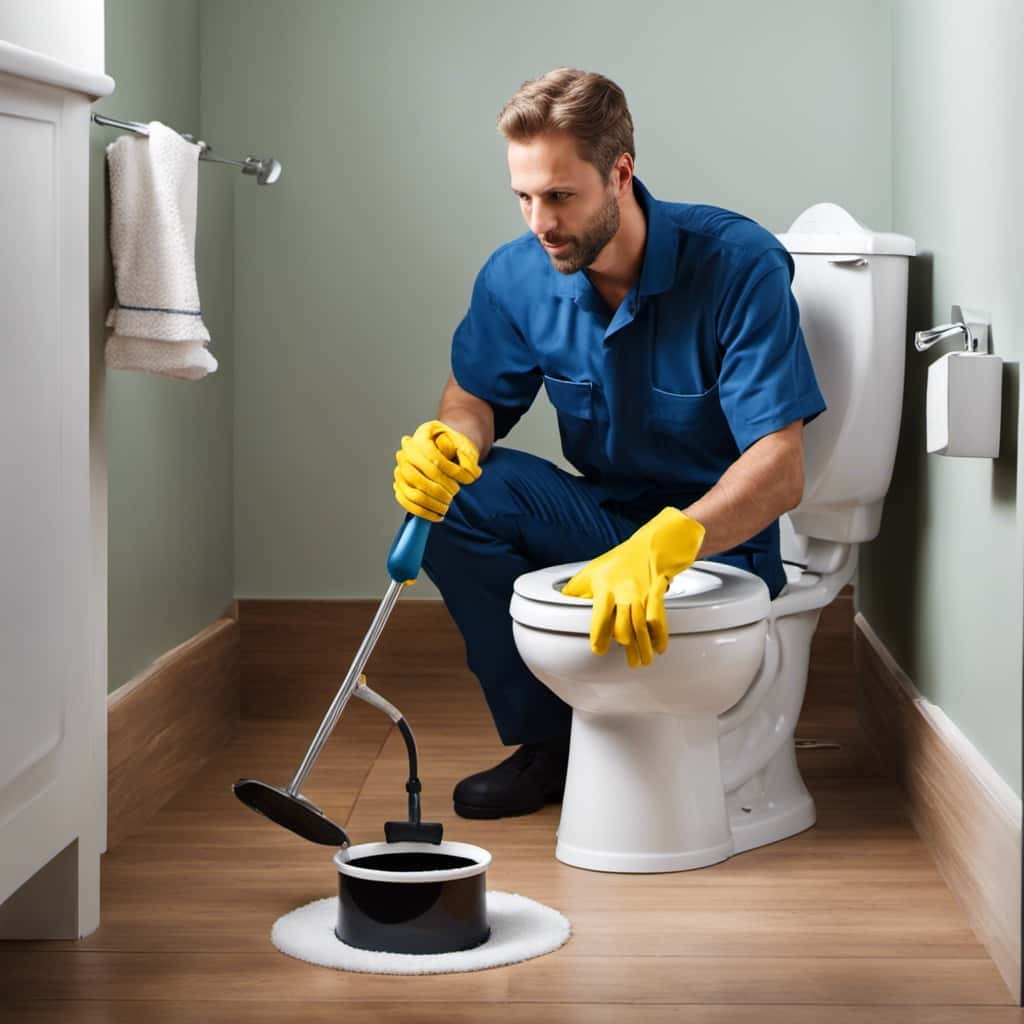
Additionally, flushing non-flushable personal hygiene products can have a negative impact on the environment. These items don’t break down easily and can end up in our waterways, causing pollution and harm to wildlife.
It’s important to properly dispose of these items in the trash to prevent these issues. By doing so, we can maintain the functionality of our plumbing systems and protect the environment.
Grease, Fats, and Oils
Grease, fats, and oils should never be poured down the toilet. Not only can they cause plumbing issues, but they also have a significant environmental impact.
When grease, fats, and oils are poured down the toilet, they can solidify and clog the pipes. This can lead to expensive repairs and inconvenience.

Furthermore, these substances can also harm the environment. When they enter the sewage system, they can mix with other materials and form clumps that can block the flow of wastewater. This can result in sewage backups and overflows, which can contaminate water sources and harm aquatic life.
To properly dispose of grease, fats, and oils, it’s recommended to let them cool and solidify, then scrape them into a container and dispose of them in the trash.
Medications and Chemicals
To continue our discussion on what shouldn’t be poured down the toilet, another item that should never be disposed of in this way is medications and chemicals.
Improper disposal of medications and chemicals can have serious environmental impacts. Flushing them down the toilet can contaminate our water sources, harm aquatic life, and even end up in our drinking water. It’s essential to use proper disposal methods for these substances.

Many communities have drug take-back programs where you can safely dispose of unused or expired medications. Additionally, household chemicals should be disposed of at designated collection centers or through hazardous waste disposal programs. By taking these steps, we can protect our environment and prevent the harmful effects that medications and chemicals can have on our water systems.
Now, let’s move on to discuss the next item on our list: paper towels and tissues.
Paper Towels and Tissues
Continuing our discussion on proper toilet disposal, it’s important to address the issue of paper towels and tissues.
While it may be tempting to flush these items down the toilet, it’s crucial to remember that they aren’t designed to break down in water like toilet paper.

Flushing paper towels and tissues can lead to clogs in your plumbing system, causing costly repairs.
Additionally, these items have a negative environmental impact. Unlike toilet paper, paper towels and tissues aren’t made to dissolve easily and can contribute to clogging in sewer systems, leading to backups and pollution.
To properly dispose of paper towels and tissues, consider using alternative options such as placing them in a waste bin or composting them.
Cat Litter and Pet Waste
Let’s talk about the proper disposal of cat litter and pet waste. When it comes to flushing pet waste down the toilet, it’s important to consider the environmental impact. Flushing cat litter can introduce harmful bacteria and parasites into the water system, posing a risk to aquatic life and human health.

Instead, here are some alternatives to flushing pet waste:
- Scoop the waste into a biodegradable bag and dispose of it in the trash.
- Use compostable cat litter made from natural materials.
- Consider installing a pet waste disposal system in your yard, which allows for proper containment and decomposition.
By choosing these alternatives, we can minimize the negative effects on the environment while still maintaining cleanliness and hygiene.
Let’s be responsible pet owners and make the right choices for our furry friends and the planet.
Frequently Asked Questions
Can I Flush Baby Wipes Down the Toilet?
Flushing baby wipes down the toilet can lead to serious plumbing issues. It’s important to know the disadvantages of using baby wipes and the alternative methods for disposing of them properly.

What Happens if I Pour Cooking Oil or Grease Down the Toilet?
Pouring cooking oil or grease down the toilet is not recommended. It can cause clogs and damage to the plumbing system. There are better disposal alternatives, such as letting it cool and then throwing it in the trash. This helps minimize the environmental impact.
Are There Any Safe Ways to Dispose of Expired Medications?
Safe disposal methods for expired medications include utilizing medication take-back programs or participating in drug disposal events. Flushing medications down the toilet should be avoided due to potential environmental impacts.
Can I Flush Paper Towels or Tissues Down the Toilet if It’s Just a Small Amount?
We should avoid flushing paper towels or tissues down the toilet, even in small amounts. There are safe alternatives available, such as disposing of them in the trash. Flushing non-biodegradable materials can have a negative environmental impact.
Is It Safe to Flush Cat Litter Made From Biodegradable Materials?
Flushing biodegradable cat litter may seem harmless, but it can have environmental consequences. To ensure safe disposal, use composting or trash bins. Let’s explore the proper methods to protect our environment.

Conclusion
In conclusion, it’s crucial to remember that toilets aren’t trash cans. Avoid flushing non-flushable products, such as personal hygiene items, down the toilet. Additionally, steer clear of pouring grease, fats, and oils as they can clog pipes.
Medications and chemicals should be disposed of properly to prevent harm to the environment. Lastly, paper towels, tissues, cat litter, and pet waste should go in the trash instead.
Let’s keep our toilets tidy and trouble-free!
With an impeccable eye for detail and a passion for bathroom-related, Ava leads our editorial team gracefully and precisely.
Under her guidance, Best Modern Toilet has flourished as the go-to resource for modern bathroom enthusiasts. In her free time, you might find Ava exploring antique shops and looking for vintage bathroom fixtures to add to her collection.
Bathroom Enhancements
Is It Bad for the Environment to Flush the Toilet
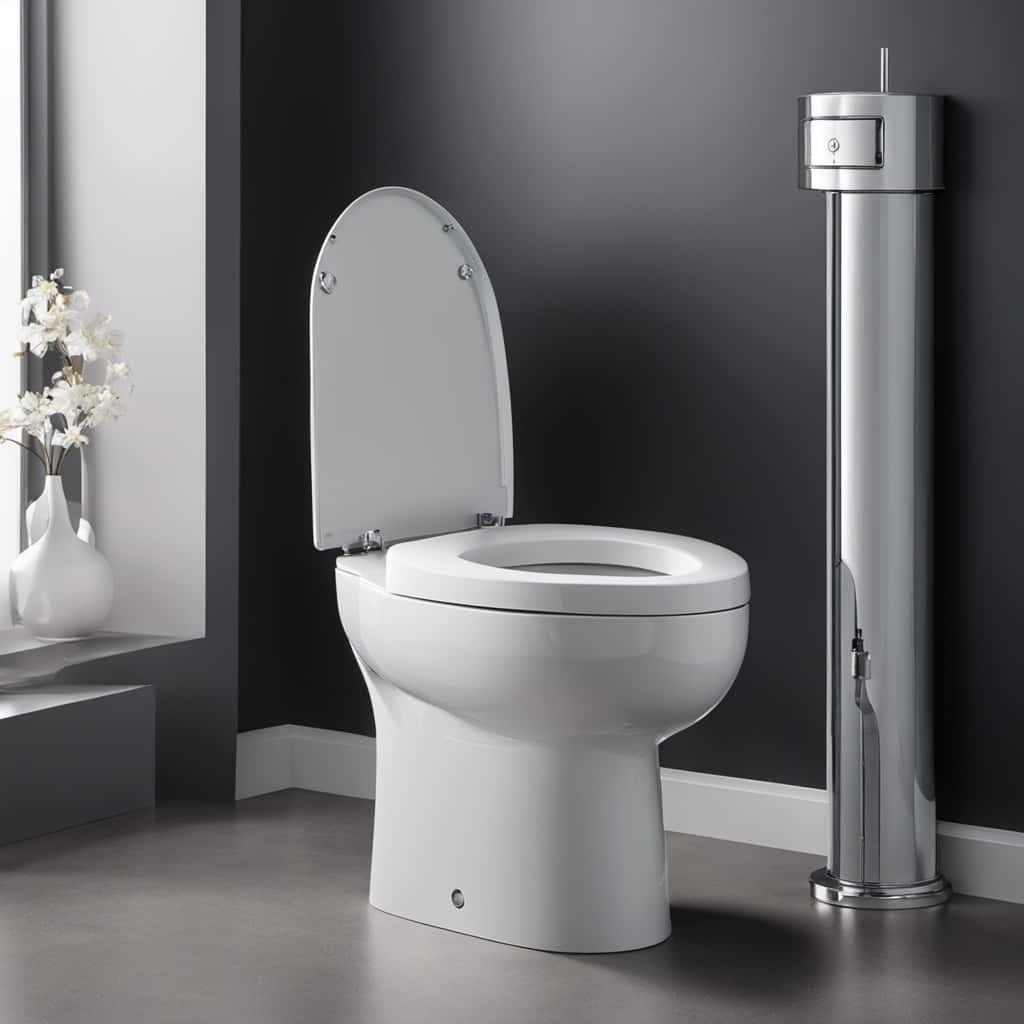
Every time we flush the toilet, we are contributing to water wastage and energy consumption. It’s a fact that each flush utilizes a substantial amount of water and consumes unseen energy.
Additionally, the process of treating wastewater can have negative environmental impacts. Excessive toilet paper usage further exacerbates the problem.
But fear not, there are sustainable alternatives to traditional flushing methods. In this article, we will explore the environmental consequences of flushing and discover ways to minimize our impact.
Key Takeaways
- Flushing the toilet wastes a significant amount of water, with standard toilets using about 1.6 gallons (6 liters) per flush and older models using up to 3.5 gallons (13 liters) per flush.
- On average, a person can waste approximately 3,650 gallons (13,800 liters) of water in a year just from flushing the toilet, highlighting the need for water conservation.
- Flushing the toilet also requires energy, with electric pumps in some toilets consuming energy and wastewater treatment plants requiring significant energy for treatment.
- Excessive toilet paper usage can lead to deforestation, as toilet paper production contributes to large-scale logging operations. Exploring alternatives like bidets or recycled toilet paper can help mitigate ecological consequences and reduce reliance on natural resources.
Water Usage: How Much Water Is Wasted With Each Flush
We waste a significant amount of water with each flush of the toilet.

Water conservation is crucial in addressing the global issue of water scarcity.
To understand the extent of water wastage, we need to examine how much water is actually used during a flush.
On average, a standard toilet uses about 1.6 gallons (6 liters) per flush, while older models can use up to 3.5 gallons (13 liters) per flush.
This may not seem like much, but considering that an average person flushes the toilet around five times a day, the water usage quickly adds up.
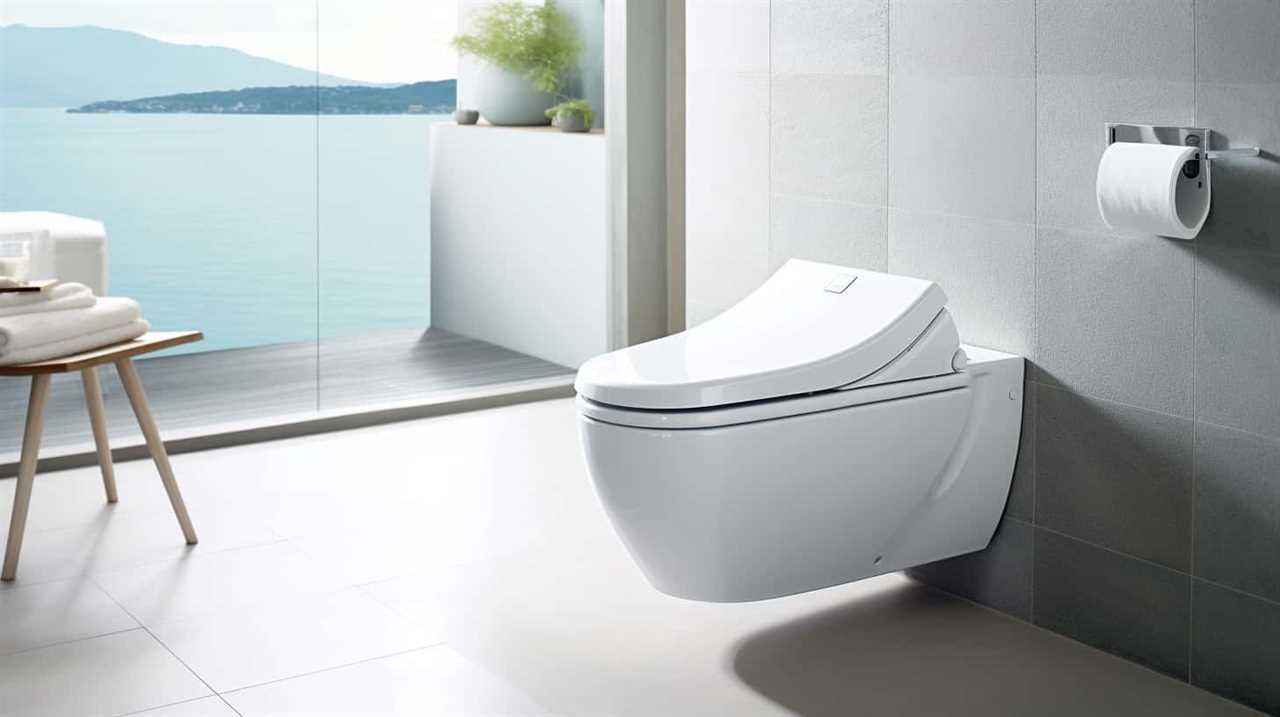
In a year, a single person can waste approximately 3,650 gallons (13,800 liters) of water just from flushing the toilet.
This highlights the importance of implementing water-saving measures and using more efficient toilet models to conserve water and combat water scarcity.
Energy Consumption: the Hidden Energy Costs of Flushing
To continue our examination of the environmental impact of flushing the toilet, let’s now delve into the hidden energy costs associated with this everyday act.
While the primary focus is often on water usage, it’s important to recognize that flushing also requires energy. Most toilets rely on gravity to flush, but some use electric pumps to assist with the process. These pumps consume energy, contributing to hidden costs.

Additionally, wastewater treatment plants require significant amounts of energy to treat and process the flushed water.
To mitigate these hidden costs, conservation measures can be implemented. Installing low-flow toilets, using dual-flush mechanisms, or opting for composting toilets can reduce both water and energy consumption.
Pollution: the Environmental Impact of Wastewater Treatment
While flushing the toilet may seem like a simple act, it’s important to recognize the environmental impact of wastewater treatment. Waste management plays a crucial role in reducing pollution and ensuring the safety of our water resources.
Wastewater treatment plants are responsible for removing harmful substances and contaminants from the water before it’s released back into the environment. However, the process of treating wastewater can also have unintended consequences. One of the major concerns is water contamination. Inadequate treatment processes or malfunctioning equipment can lead to the release of pollutants, such as chemicals and pathogens, into rivers, lakes, and oceans. This can have detrimental effects on aquatic ecosystems and pose a risk to human health.
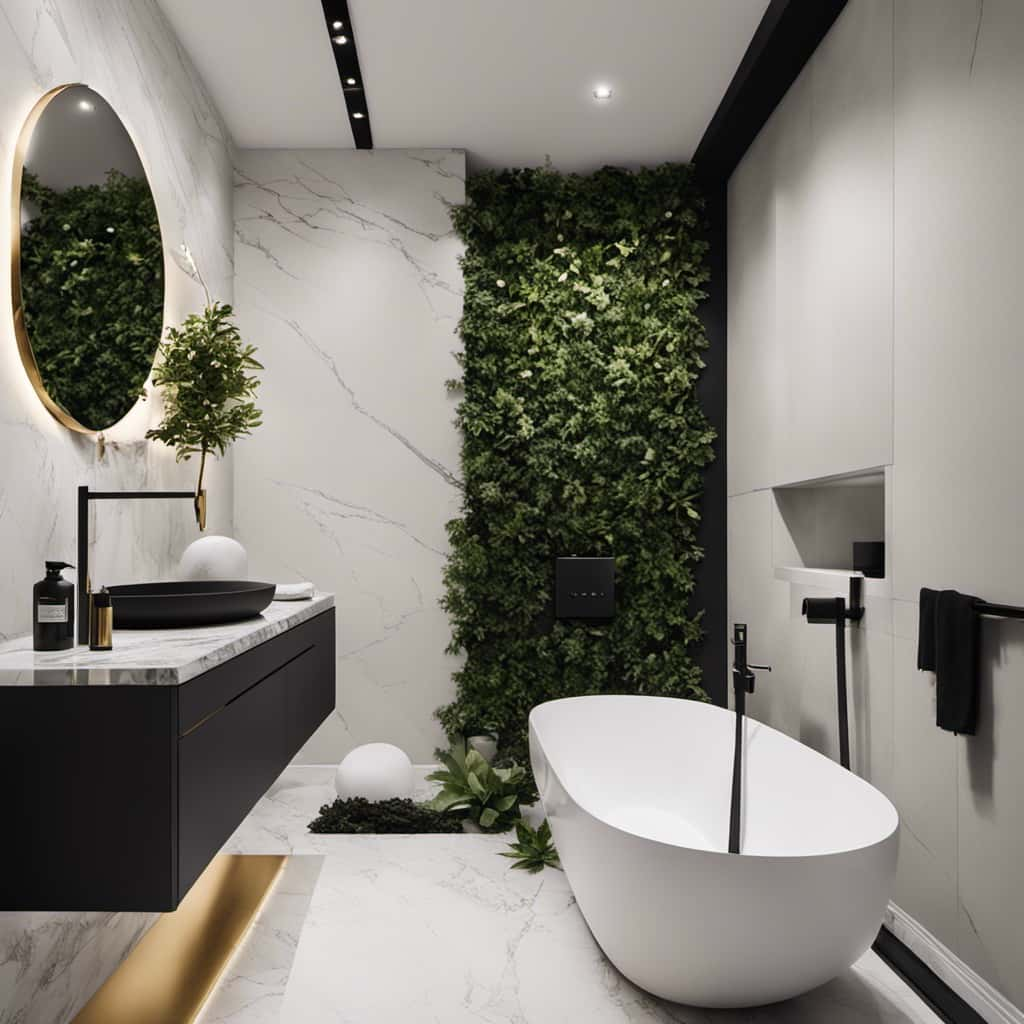
Therefore, proper waste management practices and continuous monitoring are essential to minimize the environmental impact of wastewater treatment.
Toilet Paper: the Ecological Consequences of Excessive Toilet Paper Usage
The excessive usage of toilet paper can have ecological consequences, impacting both the environment and our water resources.
One of the main concerns associated with excessive toilet paper usage is the potential for deforestation. Toilet paper is made from trees, and the demand for toilet paper has led to large-scale logging operations in some areas. This deforestation not only destroys valuable ecosystems but also contributes to climate change by reducing the amount of carbon dioxide that can be absorbed by trees.
Furthermore, the recent toilet paper shortage has highlighted the need for more sustainable alternatives. By reducing our reliance on toilet paper and exploring environmentally-friendly options such as bidets or recycled toilet paper, we can help mitigate the ecological consequences of excessive toilet paper usage and preserve our natural resources for future generations.

Sustainable Solutions: Alternatives to Traditional Flushing Methods
One possible solution to mitigate the environmental impact of flushing toilets is by exploring alternative, more sustainable flushing methods. These innovative technologies can help us save water and reduce our ecological footprint.
Here are three options to consider:
- Dual-flush toilets: These toilets have two buttons or handles, allowing users to choose a low-volume flush for liquid waste and a higher-volume flush for solid waste. This simple design change can significantly reduce water usage.
- Composting toilets: These toilets use little to no water and instead break down human waste into compost. They’re a great option for areas with limited water resources and can contribute to sustainable agriculture practices.
- Greywater systems: These systems collect and treat water from sinks, showers, and washing machines, making it suitable for flushing toilets. By reusing water that would otherwise go to waste, greywater systems promote water conservation.
Frequently Asked Questions
Can Flushing the Toilet Too Often Lead to Water Shortages in Certain Areas?
Flushing the toilet too often can contribute to water shortages in certain areas. Water conservation is crucial, and reducing toilet usage is one way to conserve water and mitigate the impact on the environment.
Is It True That Flushing the Toilet With the Lid Open Can Release Harmful Bacteria Into the Air?
When flushing the toilet with the lid open, harmful bacteria can be released into the air. This can pose health risks as these bacteria can be inhaled or land on surfaces, potentially causing infections or illnesses.

Are There Any Health Risks Associated With Using Excessive Toilet Paper?
Using excessive toilet paper can pose health risks, such as clogged pipes and plumbing issues. Additionally, it can have a negative impact on wastewater treatment systems. Exploring toilet paper alternatives may help mitigate these concerns.
How Does the Use of Chemical Cleaning Agents in Toilets Affect the Environment?
Using chemical cleaning agents in toilets can have a negative environmental impact. These agents often contain harmful ingredients that can contaminate water sources and harm aquatic life. It is important to consider eco-friendly alternatives.
What Are Some Eco-Friendly Options for Replacing Traditional Flushing Toilets?
Eco-friendly toilet alternatives and water-saving toilet options are important considerations for reducing our environmental impact. By exploring innovative solutions, we can find ways to minimize water usage and promote sustainability in our daily lives.
Conclusion
In conclusion, it’s evident that flushing the toilet has significant negative impacts on the environment. The amount of water wasted, the hidden energy costs, the pollution from wastewater treatment, and the ecological consequences of excessive toilet paper usage all contribute to the overall harm caused.

It’s crucial for us to explore sustainable alternatives to traditional flushing methods in order to minimize our ecological footprint and protect our planet for future generations.
With an impeccable eye for detail and a passion for bathroom-related, Ava leads our editorial team gracefully and precisely.
Under her guidance, Best Modern Toilet has flourished as the go-to resource for modern bathroom enthusiasts. In her free time, you might find Ava exploring antique shops and looking for vintage bathroom fixtures to add to her collection.
Bathroom Enhancements
Is It Ok to Pour Buckets of Water Down the Toilet
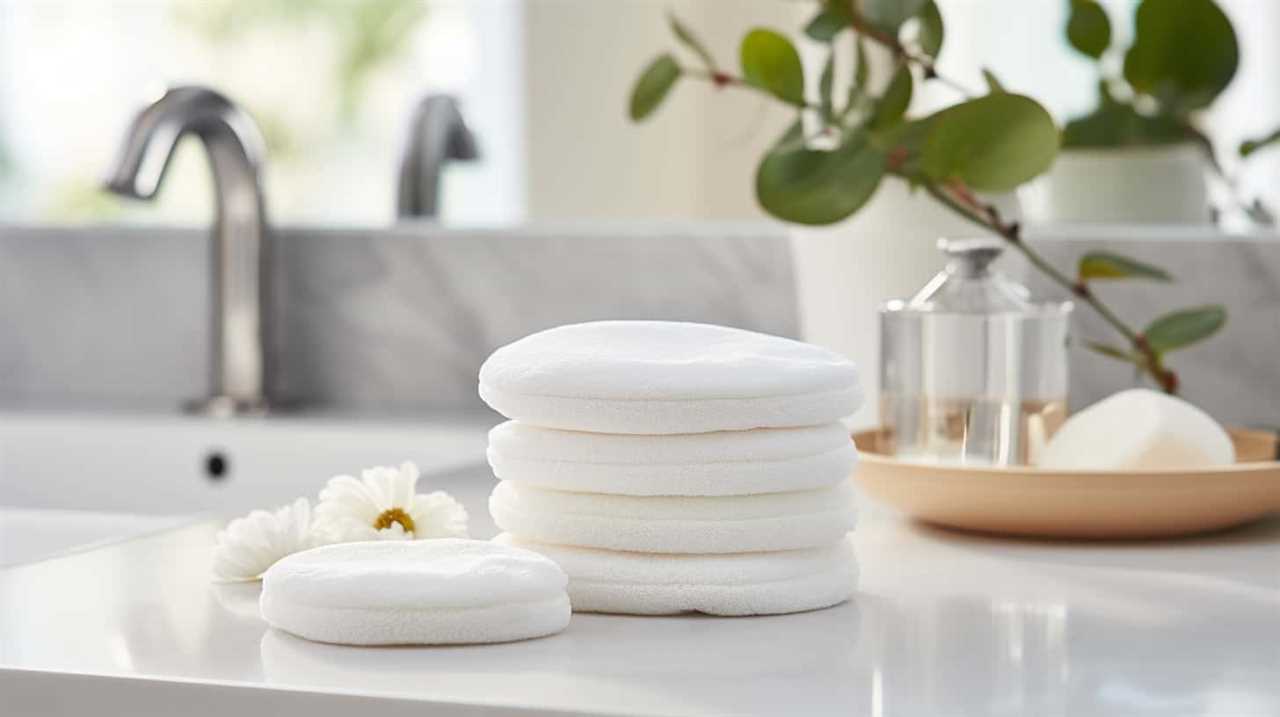
Are you fed up with handling a blocked toilet? We’ve all experienced it – the annoyance, the disruption.
But before you grab that bucket and start pouring water down the toilet, let’s take a closer look. In this article, we’ll explore the potential risks, benefits, and alternatives of this common solution.
We’ll also provide tips on how to safely pour water down the toilet and when it’s time to seek professional help.
Get ready to master the art of toilet troubleshooting!
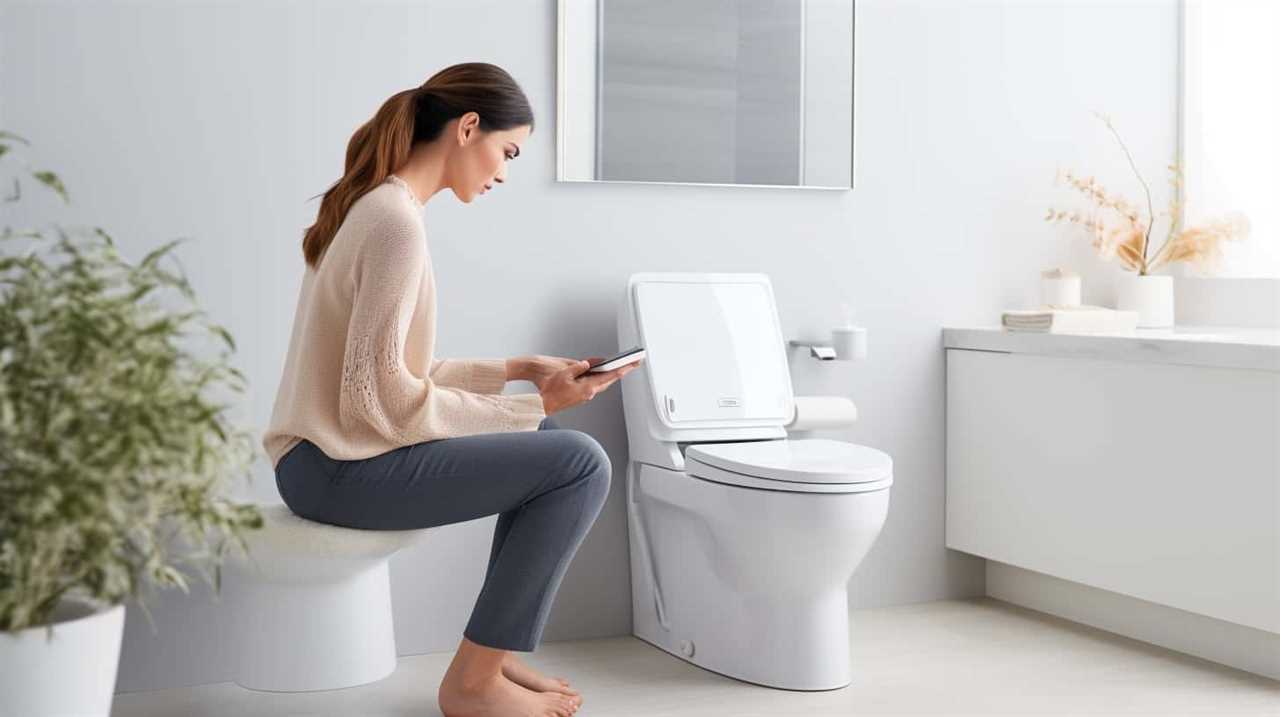
Key Takeaways
- Pouring water down the toilet can have potential risks such as overflowing, increased risk of clogging, strain on the plumbing system, and potential water damage.
- However, there are benefits to pouring water down the toilet, such as preventing odor and bacteria buildup, ensuring a clean toilet bowl, and contributing to water conservation efforts.
- There are alternative options to pouring water down the toilet, such as installing a low-flow toilet, using a dual-flush system, trying toilet tank displacement, and switching to natural cleaning products.
- It is important to consult a professional plumber to resolve plumbing issues, as they have expert knowledge and experience, can provide proper diagnosis and efficient solutions, and help prevent water damage and costly repairs in the future.
Potential Risks of Pouring Water Down the Toilet
There are several potential risks associated with pouring large quantities of water down the toilet. It’s important to be aware of these risks and take necessary precautions to avoid potential consequences.
One potential risk is the overflowing of the toilet bowl. Pouring excessive amounts of water can overwhelm the toilet’s drainage system, leading to an overflow and potential water damage.
Another risk is the potential for clogging the toilet. If the toilet is already prone to clogging, pouring large quantities of water can exacerbate the problem and result in a blockage.
Additionally, pouring excessive water down the toilet can put strain on the plumbing system, potentially causing leaks or even burst pipes.

To avoid these risks, it’s advisable to pour water slowly and in smaller quantities, allowing the toilet to flush properly without overwhelming the system. Regular maintenance of the toilet and plumbing system is also recommended to prevent any potential issues.
Benefits of Pouring Water Down the Toilet
One benefit of pouring water down the toilet is that it can help to prevent the buildup of odors and bacteria. When water is poured down the toilet, it helps to flush away any lingering waste and residue, ensuring that the toilet bowl remains clean and sanitary.
This can be particularly useful in households with multiple occupants or high traffic areas where the toilet is frequently used. Additionally, regularly pouring water down the toilet can contribute to water conservation efforts. Instead of using a large amount of water for a full flush, pouring a smaller amount of water can still achieve the desired cleanliness while minimizing water usage.
However, while pouring water down the toilet can provide these benefits, it’s important to consider alternatives that may be more efficient and environmentally friendly.

Alternatives to Pouring Water Down the Toilet
To explore more environmentally friendly options, we can consider using alternative methods to conserve water instead of pouring buckets of water down the toilet. Here are some alternatives for toilet water conservation and eco-friendly toilet cleaning:
- Install a low-flow toilet: These toilets use less water per flush, helping to conserve water without sacrificing performance.
- Use a dual-flush system: Dual-flush toilets have two buttons or handles, allowing you to select a lower or higher water volume depending on the waste being flushed.
- Try toilet tank displacement: Place a plastic bottle or bag filled with water in the toilet tank to displace water and reduce the amount used per flush.
- Switch to natural cleaning products: Choose eco-friendly toilet cleaners that are biodegradable and free from harsh chemicals, reducing harm to the environment.
By implementing these alternatives, we can contribute to water conservation efforts and promote a more sustainable approach to toilet usage.
Transitioning into the next section, let’s also explore some tips for safely pouring water down the toilet.
Tips for Safely Pouring Water Down the Toilet
Sometimes, we need to safely pour water down the toilet to address certain issues or perform maintenance tasks. When it comes to toilet maintenance, it’s crucial to be mindful of water conservation.

Here are some tips to ensure the safe pouring of water down the toilet while minimizing water waste.
Firstly, use a bucket with a controlled pour spout to avoid spillage and unnecessary water usage.
Secondly, pour the water slowly and steadily to prevent any overflow or splashing. It’s important to maintain a steady flow of water to avoid any potential damage to the toilet or the surrounding area.
Additionally, be cautious not to pour excessive amounts of water that could strain the plumbing system or cause clogs.
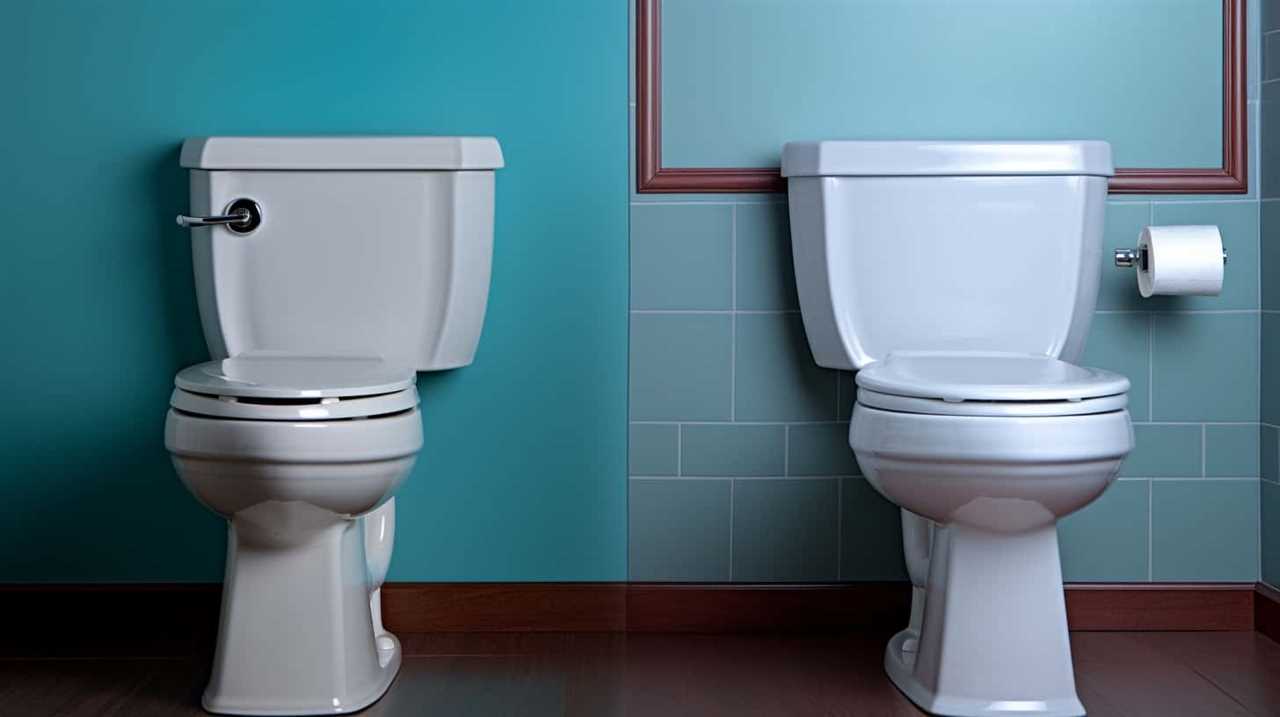
When to Seek Professional Help for a Clogged Toilet
If experiencing a clogged toilet, it’s important to consider seeking professional help. While some minor clogs can be resolved with DIY methods, there are situations where the risks outweigh the benefits. Here are some signs that indicate a serious toilet clog:
- Persistent clogs: If your toilet keeps getting clogged despite your attempts to unclog it, it may be a sign of a more significant issue.
- Multiple fixtures affected: When other fixtures in your bathroom, such as sinks or showers, also start experiencing drainage problems, it suggests a blockage in the main sewer line.
- Foul odors: Unpleasant smells coming from your toilet, especially accompanied by slow drainage, could indicate a blockage that requires professional attention.
- Sewage backup: If sewage starts backing up into your toilet or other drains, it’s a clear indication of a severe clog that needs immediate professional intervention.
When faced with these signs, it’s best to consult a professional plumber to diagnose and resolve the issue, ensuring a thorough and long-lasting solution.
Frequently Asked Questions
How Much Water Should I Pour Down the Toilet to Unclog It?
To unclog the toilet, we recommend using eco-friendly solutions like pouring a moderate amount of water down the bowl. Alternatively, you can use a plunger to create pressure and dislodge the blockage.
Can Pouring Water Down the Toilet Cause Any Damage to the Pipes or Plumbing System?
Pouring water down the toilet is a safe and effective method for unclogging it. It is less damaging to pipes than chemical drain cleaners and offers a viable alternative to using plungers.
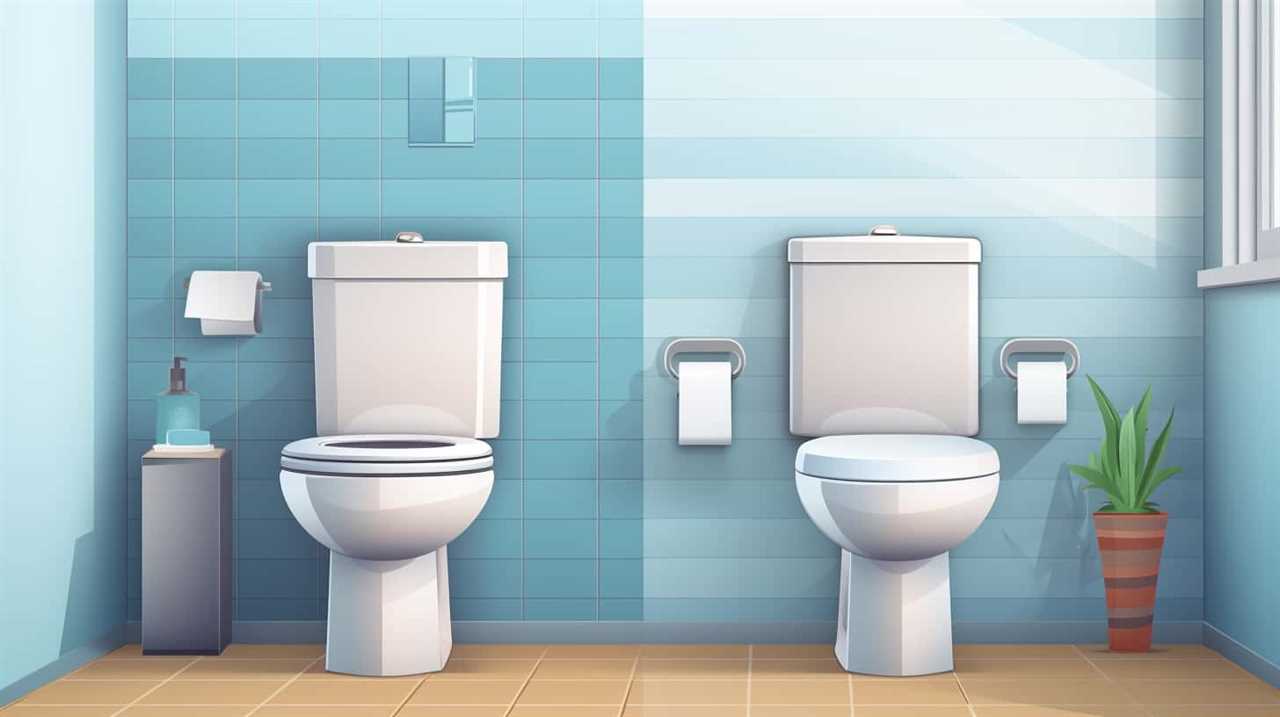
Is It Safe to Pour Hot Water Down the Toilet?
Pouring hot water down the toilet is generally safe, but caution must be exercised. The high temperature can cause damage to the toilet bowl, wax ring, or even the pipes, leading to leaks or cracks.
Can Pouring Water Down the Toilet Potentially Worsen a Clog?
Pouring water down the toilet may potentially worsen a clog. It is important to consider the pros and cons of using a plunger or a drain snake instead. Each method has its own advantages and disadvantages.
Are There Any Eco-Friendly Alternatives to Pouring Water Down the Toilet to Unclog It?
There are eco-friendly solutions and natural toilet unclogging methods available. These alternatives can be effective in unclogging toilets without the need for pouring buckets of water down the toilet.
Conclusion
In conclusion, pouring buckets of water down the toilet can be a risky endeavor with potential drawbacks. While it may provide temporary relief for a clog, there are alternative methods that are safer and more effective.

It’s essential to exercise caution and follow proper techniques to avoid further damage. Remember, seeking professional help is always a wise choice if the problem persists.
As the saying goes, ‘Better safe than sorry.’
With an impeccable eye for detail and a passion for bathroom-related, Ava leads our editorial team gracefully and precisely.
Under her guidance, Best Modern Toilet has flourished as the go-to resource for modern bathroom enthusiasts. In her free time, you might find Ava exploring antique shops and looking for vintage bathroom fixtures to add to her collection.
-

 Bathtub3 months ago
Bathtub3 months agoAre Clorox Toilet Wand Refills Septic Safe
-

 Reviews3 months ago
Reviews3 months agoLoupusuo Luxury Smart Toilet Review [2024]
-
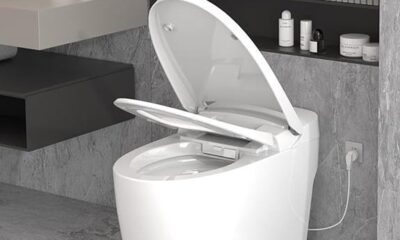
 Reviews3 months ago
Reviews3 months agoSimple Project Modern Smart Toilet Review [2024]
-

 FAQ - Advanced Bathroom Queries3 months ago
FAQ - Advanced Bathroom Queries3 months agoWhat to Do if You Accidentally Flush a Paper Towel
-
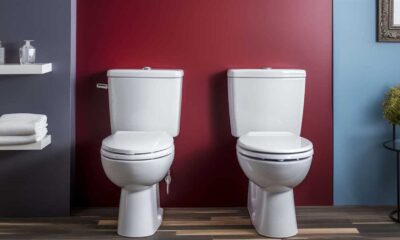
 Toilet Brands3 months ago
Toilet Brands3 months agoCan You Put Toilet Paper Down the Toilet in Cyprus
-
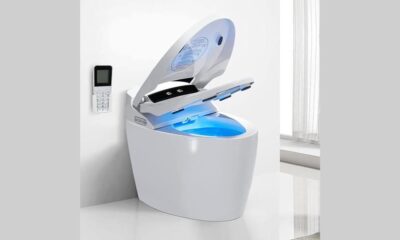
 Reviews3 months ago
Reviews3 months agoLDian Smart Toilet Review: Luxury and Hygiene Combined [2024]
-
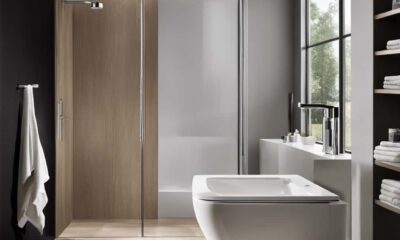
 Reviews3 months ago
Reviews3 months agoWhich Is Better Flush Valve or Flush Tank
-

 FAQ - Advanced Bathroom Queries3 months ago
FAQ - Advanced Bathroom Queries3 months agoWhat to Do if a Toilet Paper Roll Gets Flushed Down the Toilet


















